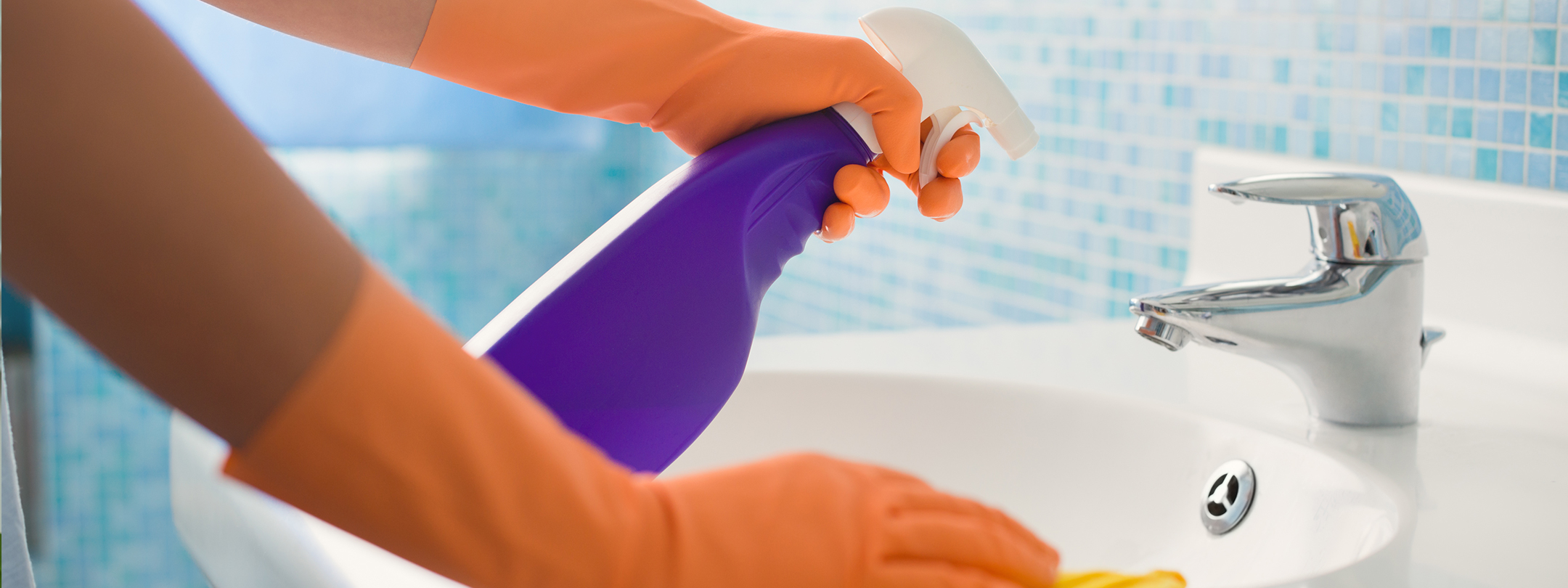
Someone in your household caught a bug. Luckily, there are things you can do to clean your home to prevent spreading germs to other people. Here’s how to clean your home after someone has been sick.
WHAT SHOULD YOU CLEAN FIRST?
Wipe down areas that are commonly touched: the remote control, doorknobs, faucets, the refrigerator handle, cabinet hardware, and countertops. Common viruses can last on hard surfaces for days to weeks, according to the American Society for Microbiology.
Most people who are sick spend a lot of time in bed, so it’s good practice to wash linens, pillowcases, and pajamas in hot water after any illness. This is also a good time to wash bath towels, hand towels, and kitchen towels, which can carry microbes and bacteria and might be dirtier than you think—especially if they remain in damp places.
Wipe down the nightstand and any other surfaces near the bed that might have germs on them. And if the person who wasn’t feeling well used any other devices like a tablet or phone, clean those electronics as well.
DON’T FORGET TO CLEAN THESE HARD SURFACES
Viruses can live on hard surfaces like the kitchen table, light switches, and door handles for up to 48 hours. If the illness was related to a stomach bug, it’s especially important to clean the bathroom. Be sure to clean the toilet lid, seat and handle, the floor around the toilet, all fixtures and handles, and door handles.
Wash bath rugs and towels in hot water and dry on high heat. And while we’re talking about items in the bathroom, you may consider replacing your toothbrush after an illness—though it’s not completely necessary, it might just be a good idea.
HOW TO DISINFECT SURFACES
If someone’s been sick in your home, it’s best to use a cleaner strong enough to kill germs. Look for a cleaner that says disinfectant or make your own by mixing a ¼ cup of bleach with a gallon of hot water to clean hard surfaces. Never mix bleach with ammonia or any other cleaner.
The Centers for Disease Control (CDC) recommends bleach to kill stomach bugs (novovirus) on surfaces, and flu viruses can be killed with cleaners that have a base of hydrogen peroxide. Use a different sponge to clean each room to not spread germs throughout the house. Consider using a different color sponge for each room (and toilet) in the house to keep them separate.
ALWAYS WASH YOUR HANDS
Even if there’s no illness in your home, it’s always a good idea to wash your hands on a regular basis. Personal contact is the most common way viruses spread. So, the best way to prevent the spread of germs is to regularly wash your hands and avoid touching your nose, mouth, and eyes—this includes biting your nails. Wash your hands—especially at these times—to help prevent spreading of germs:
• After blowing your nose, coughing, or sneezing
• Before and after helping or caring for someone who is sick
• After touching garbage
• Before and after eating or preparing food
Taking these steps to thoroughly clean your home might help you rest easy knowing you’ve done your part to help prevent the spread of germs.
For information on our medical and dental plans, visit selecthealth.org/plans.
Related Articles

